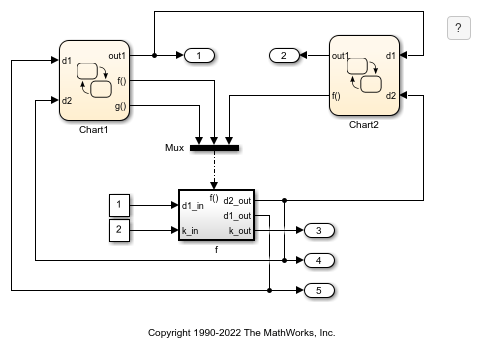Mux
将相同数据类型和复/实性的输入信号合并为虚拟向量
库:
Simulink /
Commonly Used Blocks
Simulink /
Signal Routing
HDL Coder /
Commonly Used Blocks
HDL Coder /
Signal Routing
描述
Mux 模块将具有相同数据类型和复/实性的输入合并为一个虚拟向量。您可以使用多个 Mux 模块分多个阶段创建复路信号,但结果是平面结构,就像您只使用一个 Mux 模块一样。
理想情况下,使用 Mux 模块仅对函数调用信号进行分组。
Mux 模块可以基于具有相同数据类型和复/实性的信号创建一个虚拟向量,但其他模块可以更灵活、更高效地对信号进行分组。
要对信号或消息进行分组,请使用 Bus Creator 模块,而不是 Mux 模块。Bus Creator 模块会创建虚拟总线,让您能够灵活地将不同数据类型和复/实性的元素进行组合。虚拟总线还允许您按名称而不是索引来访问元素。如果模块需要虚拟向量而不是虚拟总线,模型编译会将总线转换为向量。
要串联输入信号,请使用 Vector Concatenate 模块,而不是 Mux 模块。Vector Concatenate 模块创建一个非虚拟向量,这可提高生成代码的效率。
有关复路信号、虚拟总线和串联信号的比较,请参阅Explore Composite Interfaces。
示例
端口
输入
输出
参数
模块特性
数据类型 |
|
直接馈通 |
|
多维信号 |
|
可变大小信号 |
|
过零检测 |
|
扩展功能
版本历史记录
在 R2006a 之前推出
